
views
Using Treats and Sound
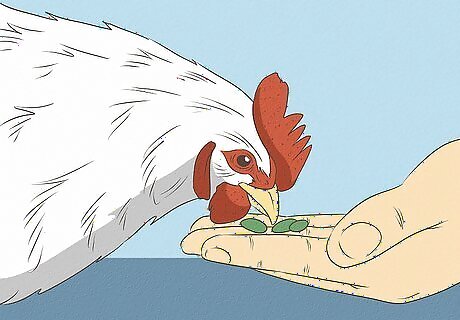
Use treats to motivate your chickens. Chickens love food, so treats are good for reinforcing the behavior you’re trying to teach them. When training your chickens, give them a treat after they do something right. Try to use treats that are different than their regular food. Some easy treats that chickens love are dried mealworms, bird seed, fruits, and vegetables.
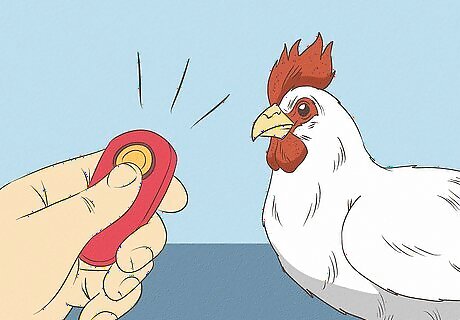
Come up with a sound your chickens will recognize during training. These sounds are called bridges. Any sound can be a bridge, as long as you can make it consistently so your chickens don’t get confused. Use the bridge right after your chickens do something right and before you give them a treat. They’ll start to associate the bridge with getting a reward. The bridge you use with your chickens could be the word “awesome” or you whistling. If you want to be certain your bridge will always sound the same, use a training clicker (like the kind they use to train dogs) as a bridge.
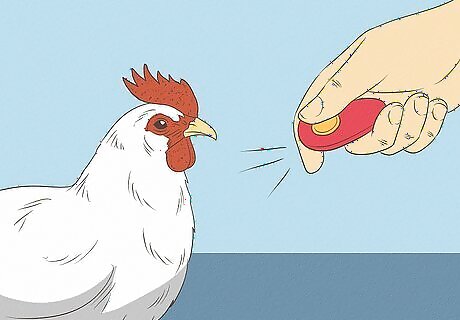
Be consistent with your training. Chickens are smart, but you’ll need to reinforce their good behaviors daily if you want your training to stick. Make an effort to work with your chickens at least once a day. The more often you train them, the faster they’ll learn.
Training Chickens to Come When Called
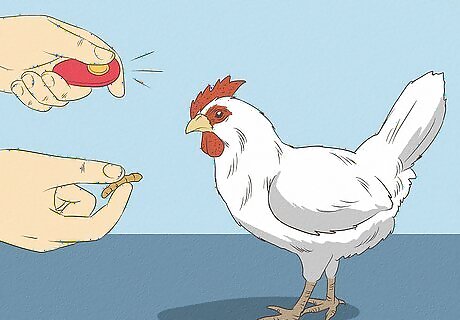
Make your bridge noise and give your chickens a treat. Let your chickens see the treats in your hand so they approach you. Continue to do this around 2-3 times a day so your chickens associate food with the bridge noise. Make sure you’re making your bridge noise first and giving them treats immediately after.
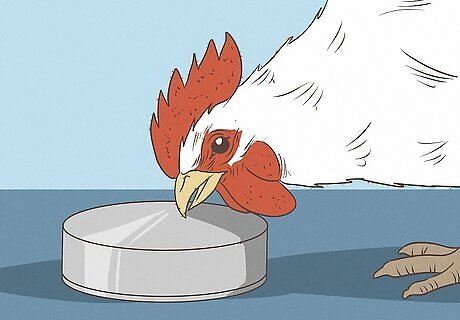
Start hiding the treats while making your bridge noise after a few days of training. Watch your chickens reactions after you bridge. If they perk up and approach you like they're waiting for food, the training is working. Give them the treats after they've come to attention and approached you. If your chickens aren’t associating your bridge noise with food, keep training them until they do. It could take several weeks for all of your chickens to get there.
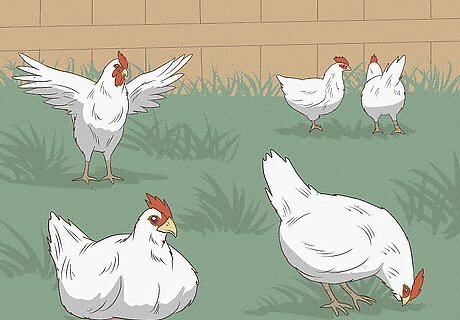
Let your chickens roam free once they associate your bridge noise with food. Make sure all of your chickens are adequately trained before you let them out. If one chicken doesn't associate your bridge with treats, that chicken won’t respond when you try to call the flock back to their coop.
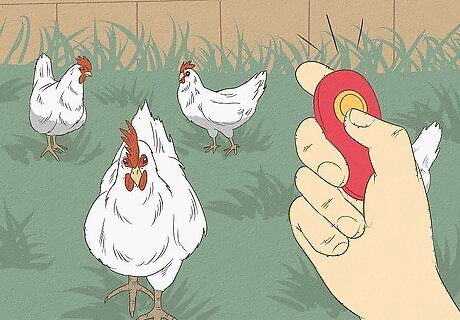
Make the bridge noise when you’re ready for your chickens to come home. You may need to make it several times so all the chickens hear it. When the chickens return, give them their treats. If any of your chickens don’t respond to your bridge noise, go collect them and bring them back to the coop. Keep training them until they make the connection.
Training Chickens to Perch on Your Hand
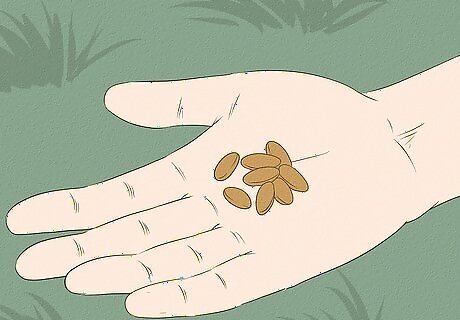
Put your palm face up on the ground and hold a treat in your free hand. Hold the treat close to your palm that’s on the ground, so that your palm is in between the treat and the chicken.
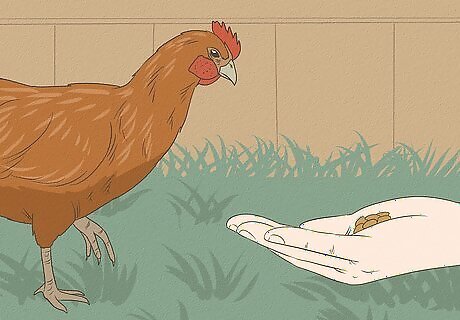
Show the chicken the treat and wait for it to walk over. Keep holding the treat close to your palm on the ground so the chicken has to walk onto your palm to get it. Don’t give the chicken the treat just yet.
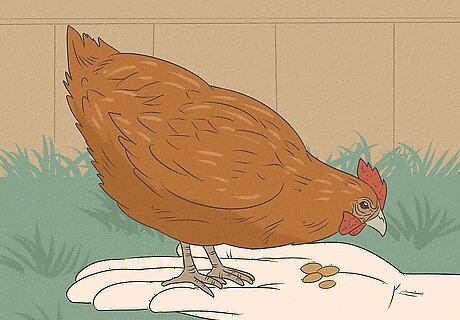
Make your bridge noise and give the chicken the treat once it’s on your palm. Make sure both of its feet are on your palm before you bridge and give it the treat. Don’t lift your palm off the ground yet. Let the chicken get comfortable stepping on your hand a few times first.
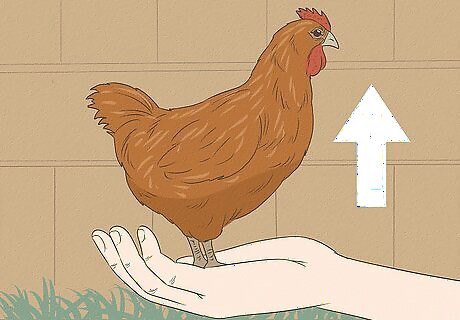
Try again, this time lifting your palm a few inches off the ground. Wait for the chicken to step onto your palm before you lift it. Don’t lift your hand too high at first or you may startle the chicken. Keep your hand steady in the air.
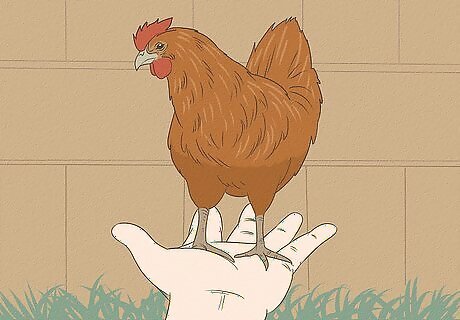
Repeat daily, lifting your palm a few inches higher each session. Don’t rush the process. Take it slow so the chicken gets used to standing on your hand. After a few sessions, try moving your palm back and forth slowly while the chicken is on it. Eventually, you should be able to walk around with the chicken perched on your hand. When you’re ready for the chicken to get off your hand, gently place your hand on the ground so it can step off.
Training Chickens with a Target
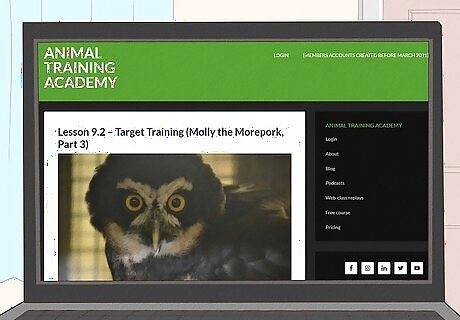
Get an animal target trainer. Look for one online or at your local pet store. Target trainers look like a long stick with a ball at the end. If you don’t want to buy one, make one for your chickens by attaching a wiffle ball to the end of a chopstick. With a target trainer, you can train your chickens to go anywhere you place the target, whether it's in their coop, your hand, or another spot in your yard.
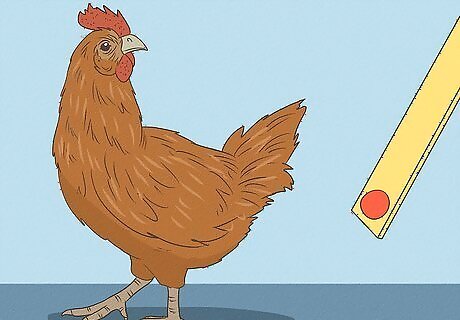
Place the target near your chickens. It doesn't matter where you place it at this point, as long as your chickens can access it. Wait for your chickens to notice the target and walk over to investigate.
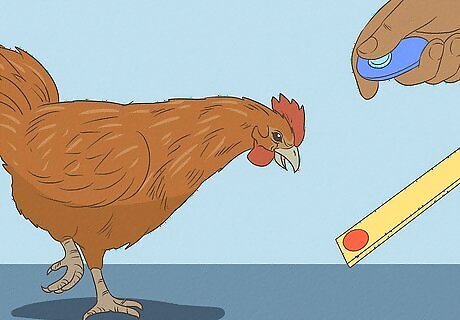
Reward your chickens when they get near the target. It’s OK if they’re a few steps away at this point. Make your bridge noise and give them a treat. If your chickens aren't going near the target at all, show them treats to lure them over.
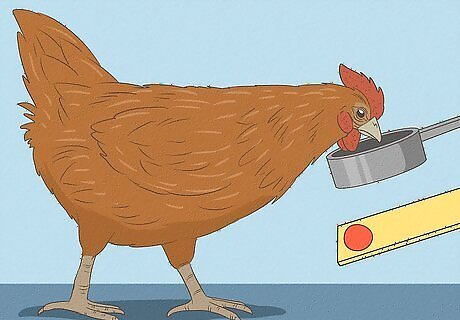
Wait for your chickens to get closer to the target before you reward them again. If they were 3 steps away from the target last time you gave them a treat, wait until they’re 2 steps away this time. Make it incrementally harder for your chickens to get a reward. This will train them to get closer and closer to the target. Continue this until your chickens are walking right up to the target.
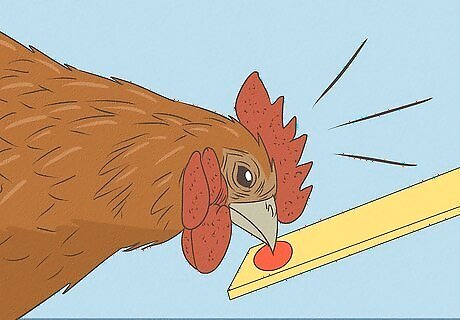
Wait until your chickens peck the target to give them a treat. When they do, make your bridge noise and give them their snack. Every training session, continue to reward your chickens when they peck the target.
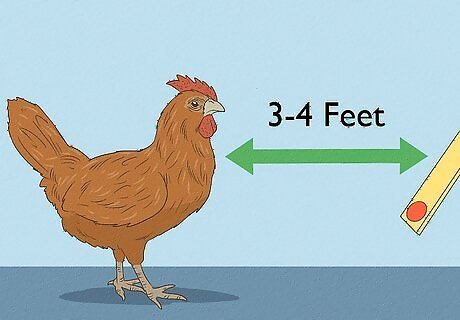
Move the location of the target after a few training sessions. Don’t move it too far at first; 3–4 feet (0.91–1.22 m) is enough. If your chickens continue to peck the target, you can start moving it to farther away to new places, like on top of a post or on a table. Your chickens should start to follow the target wherever you take it.
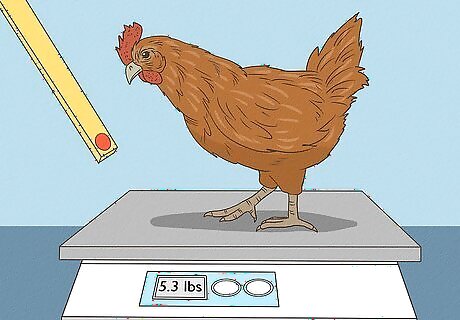
Put your chicken’s target training to use. If you need to weigh your chickens on a scale, put the target on it and they will hop on. Quickly get your chickens into their pen by placing the target inside of it. You can even use the target to make your chickens run an agility course.




















Comments
0 comment